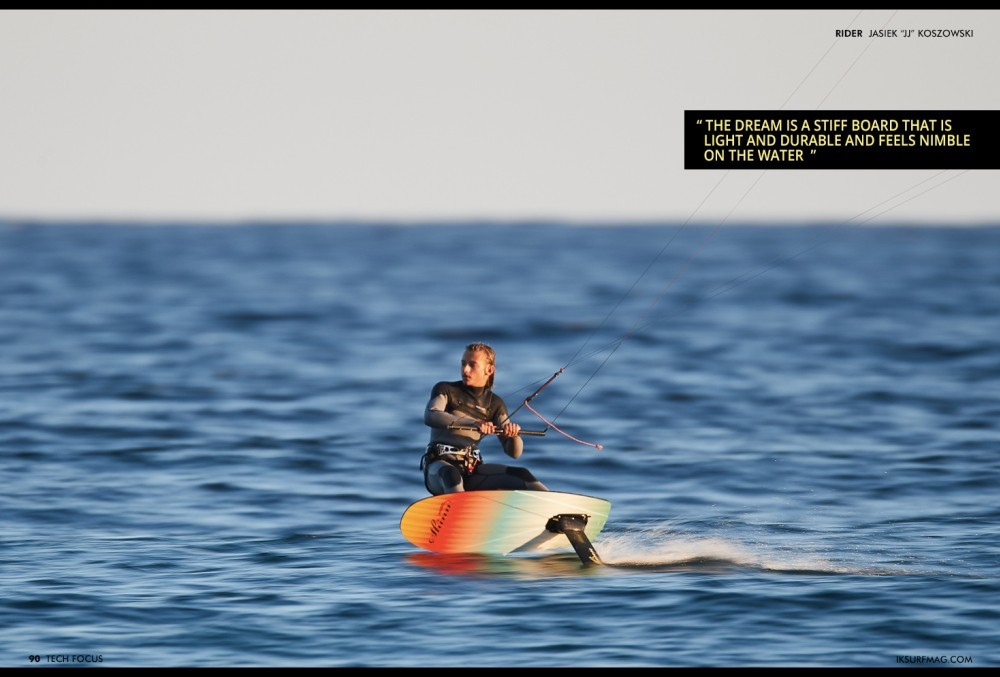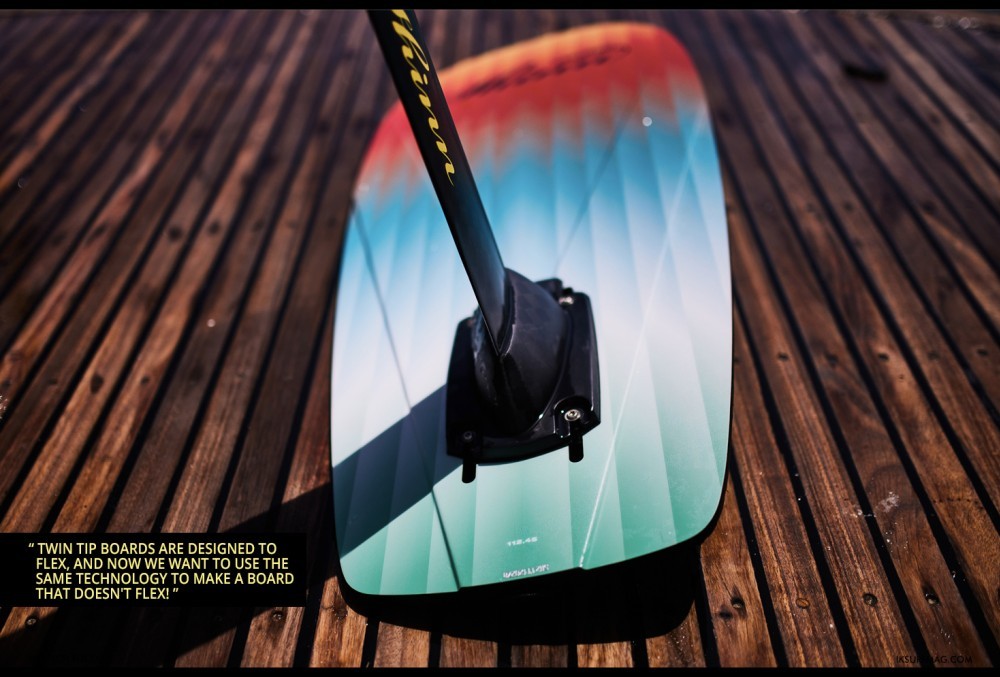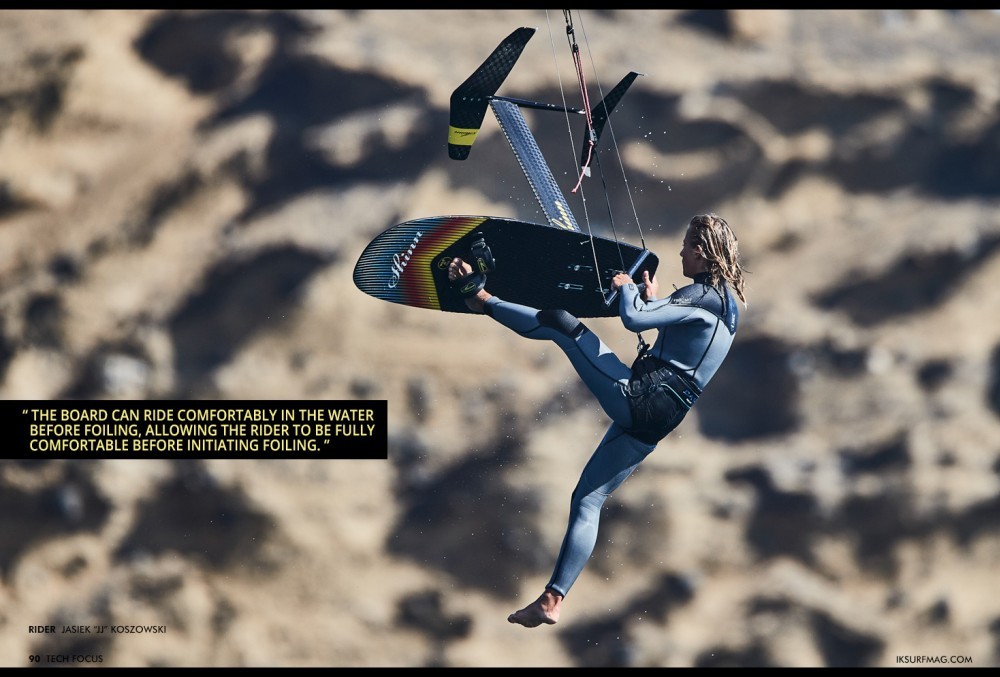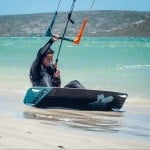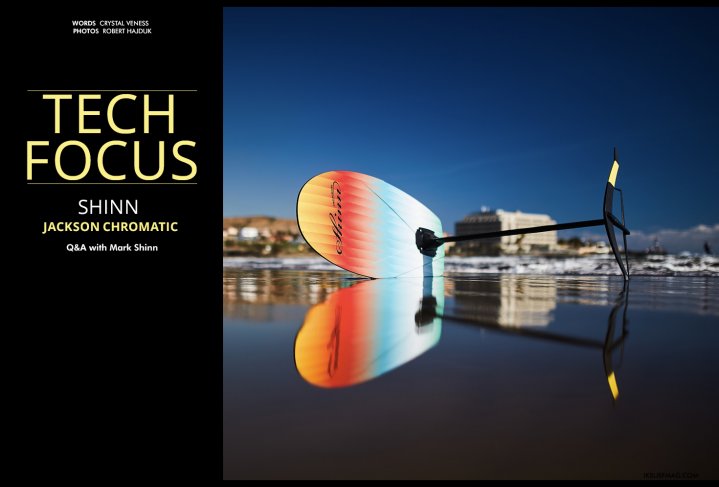
Tech Focus: Shinn Jackson Chromatic
Issue 90 / Tue 7th Dec, 2021
The latest version of the Shinn Jackson pops off the water with the Chromatic colour treatment, but it's the tech behind the board that makes it extra special. Find out more about the Jackson foil board in this Q&A with Mark Shinn!
Thanks for joining us, Mark! Can you tell us a bit about this board and what type of foiler it best suits?
The Jackson range has always been as inclusive as possible. It's a concept available in 3 different sizes, taking you from beginner to expert in one range.
In some respects, kite foilers of all abilities need the same features - deck stiffness, foil position adjustability, touch-down survivability, etc. Of course, the ratio of the importance of these features changes as the intended rider ability changes. For example, for a beginner, the ease of taking off and the survivability of touching down are critical aspects of the design; They want to spend their time learning to foil, not swimming.
On the other hand, expert-level foilers will prioritise having a smaller, more throw-about board as they wish to perform more advanced moves. Of course, they also want to ride through touch-downs, but that happens a lot less often for them and ease of take-off is less of a priority.
Both beginners and experts alike can appreciate a board stiff enough to transmit direct and instant feedback from the foil and the ability to fine-tune the set-up to match their needs.
Stiff, light, and agile are the words that you use to describe this board. How does each of these characteristics impact the kite foiling experience?
There is no place in a foil board for flex. Flex delays your control inputs to the foil and dilutes the foil feedback coming back through to the rider. Flex in the board is like trying to ride a bike with the tyres. Eliminating flex from the board should be critical for all foil board designers, but durability is a factor too. In general, robustness and stiffness are not happy partners - and that's before we even discuss the aspect of cost!
I would prioritise stiffness over all aspects. However, bringing the weight down is important too. No one wants a 10 kg foil and board set up, which directly impacts the 3rd point, agility. Stiff and light boards are, generally speaking, a lot more agile than heavy flexible boards! The dream is a stiff board that is light and durable and feels nimble on the water - and I think with the Jackson, we found a very nice balance in this regard.
The Jackson Chromatic is the one and only foil board in the Shinn lineup! Did you put yourself under a lot of pressure to achieve a perfectly balanced design?
I always put myself under a lot of pressure no matter what product I am working on. I have a personal rule that I won't produce a product I would not ride personally, and as kite foiling is a personal passion, I want to have the best equipment possible. The discussion over low volume vs higher volume kitefoil boards rages on, but I truly believe most foilers find it easier to progress on a low volume board, particularly as we see the shift continuing away from small race foils to larger free ride foils that initiate foiling so early that the size of the board becomes less and less relevant.
Wood core boards are your speciality at Shinn, so it's only natural that you created a wood core foil board! Tell us a bit more about the materials used.
I believe in using the best materials for the job, and in low volume boards like twin tip boards, wood cores are unbeatable. Wood is relatively heavy compared to foams like EPS or PVC. However, the core of a twin tip board is thin, so the weight is not really felt, and the flex and durability are fantastic with wood cores.
We make products with foam cores too, which generally have a lot more volume. However, we feel that low volume foil boards are simply easier to use. Having decided on this direction, it made sense to use wood core and ABS sidewall technology. There is a big sticking point, though; Twin tip boards are designed to flex, and now we want to use the same technology to make a board that doesn't flex!
The natural tendency is to add more materials to increase the stiffness, but this led us to prototypes that were increasing alarmingly in weight and still not achieving the stiffness we wanted. The V Tech mould was conceived to reduce both longitudinal and torsional flex from the deck via 3D shaping (in a similar way that folding a sheet of paper increases its stiffness). When combining this with the extensive use of unidirectional carbon, we end with a board that is both stiff and light.
This board comes in 3 sizes - which sizes suit certain styles and sizes of riders?
In general, I don't think rider sizes are very relevant to foil board sizes. The rider ability and foil being used are far more important. I ride the same size board as all of my team riders, and we range from 60 to 100 kg!!
The 112 is a size for confident foilers that can easily initiate foiling. Such a short board does not plane very fast, so the rider needs the ability to pump the board up onto the foil whilst accelerating to a comfortable speed. If you want a board for radical turns, tricks and jumping, the 112 is a dream.
The 128 is a great size for riders that foil predominantly in light winds. The length allows the board to accelerate well before taking off, meaning slightly less technique is needed to start than the 112. It's also a good size for fast progression as the length of the nose makes it forgiving when touching down, and yet it's still small enough to jump and do all the carving tricks.
The 140 is a dream for learning on or extremely heavy riders. The board can ride comfortably in the water before foiling, allowing the rider to be fully comfortable before initiating foiling. This size makes the learning process so easy it is almost cheating!
Videos
By Crystal Veness
Editor at IKSURFMAG, Crystal Veness hails from Canada but is based in South Africa. When she isn't busy kitesurfing or reporting on the latest industry news for the mag, she is kicking back somewhere at a windy kite beach or working on creative media projects.




